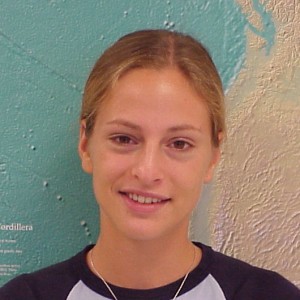 Using Chloride as an Environmental Tracer to Assess Groundwater Recharge in Fractured Rock, Central San Diego CountyRebecca Martinez Thursday, May 7th, 2015 |
||
|
||
| ABSTRACT This study presents an evaluation of using naturally occurring chloride to determine groundwater recharge to fractured rock aquifers from precipitation in eight separate field areas in the rural mountain communities of central San Diego County (“study area”). The water supply for the population in this area is almost entirely from groundwater and, therefore, groundwater recharge factors into land use and development decisions on a regular basis. The CMB is a widely used method for recharge analysis in arid and semi-arid regions, such as San Diego. Precipitation varies significantly in the study area, and the individual field areas span most of this range. The boundaries of each field area are defined as the Hydrologic Sub-Areas as delineated by the Regional Water Quality Control Board, and referred to as catchments. The ratio of wet and dry (“bulk”) atmospheric chloride (ClP) to chloride in groundwater (ClGW) is used to determine the fraction of precipitation that goes to recharge within a catchment. Examining chloride in the saturated zone integrates both space and time and, therefore, results from the use of the CMB method are indicative of long term and regional groundwater availability. Samples were collected from existing, active domestic wells that draw groundwater solely from the fractured rock aquifers in the upland zone of each catchment. The upland zone is considered the primary recharge zone and is upstream of anthropogenic activity that could affect chloride concentrations. A comparison with results from a traditional water budget was done for each catchment. The program Recharg2 calculates recharge based on the Thornthwaite method, also known as the soil moisture budget (SMB) method. Within the individual catchments ClGW is mostly within a 90% confidence interval. A generally direct relationship between ClGW and precipitation was found. Since one value of bulk atmospheric chloride was used, this corresponded to a general, but not definitive, trend of increased recharge with increased precipitation. The SMB method yielded similar results, except for Warner catchment where it is possible that not enough evapotranspiration occurs to enrich infiltrating water with enough chloride for the CMB method to be used. Another notable difference found between the SMB and CMB methods was that, based on runoff sensitivity analysis, the CMB method is not as sensitive to uncertainty in runoff, unlike the SMB. The results of this study indicate that the CMB method may be a useful and cost-effective tool for assessing recharge in central San Diego. However, the ClP value or values used should be based on a more localized dataset and a more formalized collection of groundwater from domestic wells could broaden the characterization of chloride in the aquifers. |

